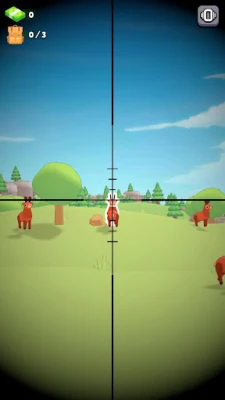
Latest Version
1.0
August 21, 2025
Dasi Games
Games
Android
0
Free
dasi.pr21.sniperhunter3d
Report a Problem
More About Sniper Hunter 3D
Maximize Your Wildlife Park: Strategies for Growth and Income
Building a successful wildlife park involves more than just collecting animals; it requires strategic planning and effective management to enhance your income and expand your park. In this article, we will explore how to grow your park, increase your revenue, and unlock new animal species in the wilderness.
Understanding the Basics of Park Growth
To create a thriving wildlife park, you must first understand the fundamentals of park growth. Each animal you collect contributes to your park's overall appeal and income potential. As you gather more animals, your park becomes more attractive to visitors, leading to increased ticket sales and revenue.
Strategies to Increase Your Income
Increasing your income is essential for expanding your park. Here are some effective strategies to consider:
1. Diversify Your Animal Collection
Collecting a variety of animals not only enhances the visitor experience but also boosts your park's income. Different species attract different types of visitors, so aim to include a mix of popular and rare animals. This diversity can lead to higher ticket sales and increased visitor engagement.
2. Invest in Park Infrastructure
As your income grows, reinvest in your park's infrastructure. Building new attractions, such as feeding stations, educational exhibits, and interactive experiences, can draw more visitors. Improved facilities enhance the overall experience, encouraging repeat visits and positive word-of-mouth.
3. Implement Effective Marketing Strategies
Promoting your wildlife park is crucial for attracting visitors. Utilize social media, local advertising, and partnerships with schools and community organizations to spread the word. Highlight unique animals and special events to entice potential visitors and increase foot traffic.
Unlocking New Animals in the Wilderness
As your park grows, you will have the opportunity to unlock new animal species. Here’s how to effectively find and collect these animals:
1. Explore Diverse Habitats
Different animals inhabit various ecosystems. To maximize your collection, explore a range of habitats, including forests, wetlands, and savannas. Each environment offers unique species, so be prepared to adapt your strategies based on the terrain.
2. Utilize Technology for Tracking
Leverage technology to track animal movements and behaviors. GPS devices and wildlife cameras can provide valuable insights into animal patterns, helping you locate and collect new species more efficiently. This data-driven approach can significantly enhance your collection efforts.
3. Collaborate with Other Park Managers
Networking with other wildlife park managers can open doors to new opportunities. Share tips, resources, and even animals to enrich your collection. Collaboration fosters a sense of community and can lead to innovative ideas for park growth.
Enhancing Visitor Experience
To ensure the long-term success of your wildlife park, focus on enhancing the visitor experience. Happy visitors are more likely to return and recommend your park to others. Here are some ways to improve their experience:
1. Offer Educational Programs
Implement educational programs that teach visitors about wildlife conservation and the importance of biodiversity. Workshops, guided tours, and interactive exhibits can engage visitors and provide them with a deeper understanding of the animals in your park.
2. Create Unique Experiences
Consider offering unique experiences, such as behind-the-scenes tours or animal encounters. These exclusive opportunities can attract more visitors and create memorable experiences that encourage them to share their adventures on social media.
3. Gather Feedback and Adapt
Regularly collect feedback from visitors to understand their preferences and areas for improvement. Use surveys, suggestion boxes, and online reviews to gather insights. Adapting your park based on visitor feedback can lead to increased satisfaction and loyalty.
Conclusion
Growing your wildlife park and increasing income requires a multifaceted approach. By diversifying your animal collection, investing in infrastructure, and enhancing the visitor experience, you can create a thriving park that attracts visitors and generates revenue. Remember to explore diverse habitats to unlock new animals and collaborate with other park managers for shared success. With dedication and strategic planning, your wildlife park can flourish, providing joy to visitors and a safe haven for animals.
Rate the App
User Reviews
Popular Apps










Editor's Choice































